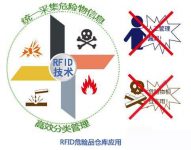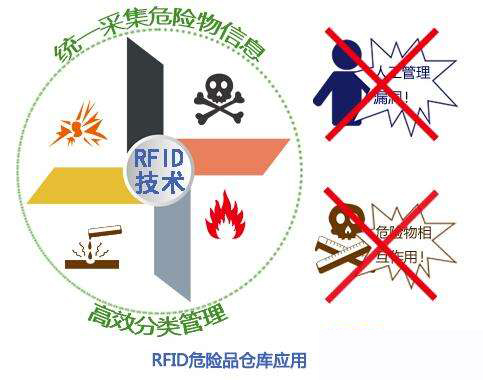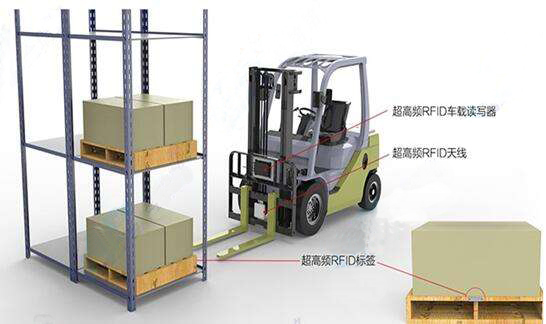
Hazardous waste storage and processing, RFID technology to help
[ad_1]
With the rapid economic development, the improper handling, storage or utilization of various hazardous wastes can easily cause serious health threats to the atmosphere, water and soil pollution, production environment and human settlements, and the health of the people. How to improve the concentration, efficiency and safety of hazardous waste has become the focus of attention. RFID technology helps to establish automated, informatized, intelligent, efficient, systematic, and planned platform management of hazardous waste. The use of RFID technology provides a basis for the creation of visual management of hazardous waste information management technology, improves the comprehensive processing capacity of hazardous waste, and avoids many hidden safety hazards.

After receiving the hazardous waste, the hazardous waste treatment center needs to correspond to the receiving list, clarify the details of the received items, and check whether the packaging is sealed and leak-free, whether there is a label attached, and fill in the specifications. After confirming that it is correct, the background system will print a bar code label based on the hazardous waste information and paste it on the hazardous goods. The hazardous waste will then be loaded onto the pallet and wait for storage.
Trays with RFID chips implanted in advance will be associated with dangerous goods information at this link. The staff use handheld devices to scan the barcodes of dangerous goods and the RFID tags of the pallets, associate the two information and upload them to the back-end database. The background system generates tasks to be stored in the warehouse, and at the same time sends the tasks to the smart forklift. The intelligent forklift is composed of a forklift industrial computer terminal and RFID scanning equipment. The forklift industrial computer can directly receive the warehousing tasks issued by the background system, and guide the forklift driver to the designated loading and unloading point for dangerous goods shipment.
When the forklift arrives at the loading and unloading point to load the dangerous goods, the RFID scanning equipment on the forklift will read the pallet label information, and by querying the background data system, the information of the dangerous goods being transferred will be clarified and transported to the designated warehouse and according to the system background instructions. The designated placement area. Install location electronic tags at the entrance to the warehouse. When the forklift enters the warehouse, the forklift RFID will scan the location label information, and the warehouse information will be matched first. If it corresponds to the warehouse, the forklift driver will be guided to the designated location; if it is not the corresponding warehouse , Will give a timely warning to remind the forklift driver to go to the correct warehouse location.
After the forklift driver arrives at the guided shelf, it will unload the goods. During the unloading process, the forklift RFID scans the shelf location label and will check whether the shelf information is correct. If it is normal, the storage operation will be completed and the information will be fed back to the background to update the inventory information in time; If it is not correct, an alarm will be issued to guide the forklift driver to the designated shelf location.

Through the application of RFID in the warehousing link, it will help the hazardous waste treatment center to strictly store dangerous goods by category, one item for one item, improve storage efficiency, avoid misplacement and misplacement caused by human error, and maximize the protection of dangerous goods storage Safety. The pretreatment of dangerous goods after leaving the warehouse also needs to be operated strictly in accordance with the relevant operating procedures. Different dangerous goods are handled in different ways, methods and steps. Avoiding wrong handling is also the top priority.
Install location tags in each pretreatment center, and the location tags are bound to pretreatment process information. Forklifts carry out dangerous goods out of warehouse from the warehouse, firstly determine the dangerous goods information through the electronic label information of the pallets loaded with dangerous goods, and check the outgoing list. After confirming that it is correct, the system prompts to go to the designated pretreatment center. After the forklift reaches the preprocessing center according to the guidance, the scanning device on the forklift will first scan the location label of the preprocessing center and check whether it is correct. If it is correct, it will prompt the forklift driver to perform the outbound operation, otherwise an alarm will be issued. All processing information will be uploaded to the background system in time, alarm information will be archived, and reports will be provided on demand.
In view of the characteristics of hazardous waste information management and the hidden safety hazards in the traditional management mode, the introduction of RFID technology will make full use of its information identification, remote identification, and strong environmental tolerance characteristics, and build a hazardous waste information management system on this basis , To realize the automation, informationization, high efficiency, standardization and refinement of the management of dangerous goods in and out of the warehouse, thereby improving the concentration, efficiency and safety of hazardous waste disposal, and effectively reducing the pressure of manual management.
The use of RFID technology allows the unified collection and management of dangerous goods information, and efficient classification and storage of dangerous goods. Quickly manage chemical information through RFID automatic collection technology, understand the status of chemicals in real time, and conduct inspections by personnel. It not only improves the work efficiency of dangerous goods management and makes the supply chain management more scientific, but also solves the key points of management in the dangerous goods logistics and ensures the safety and quality of dangerous goods.
[ad_2]


